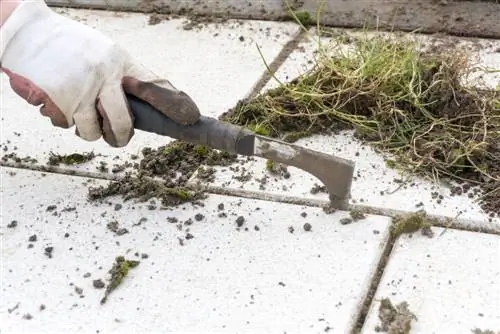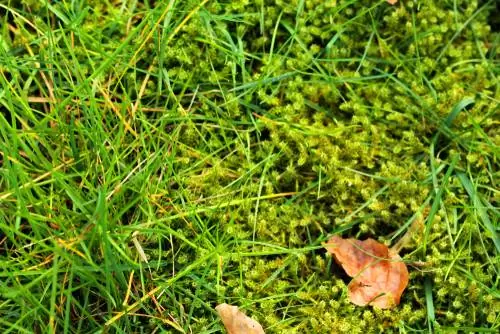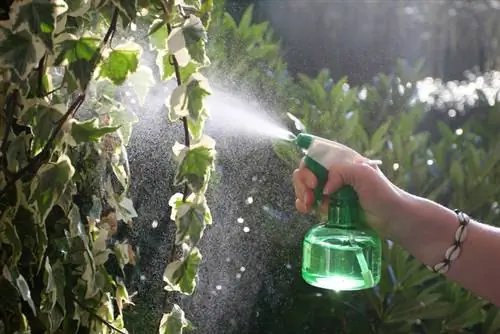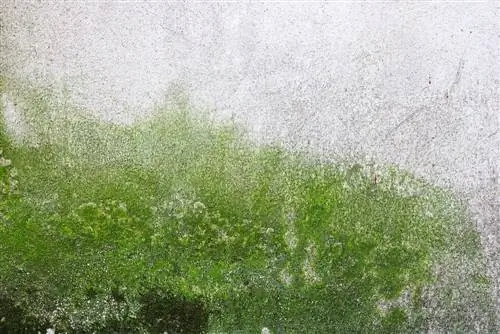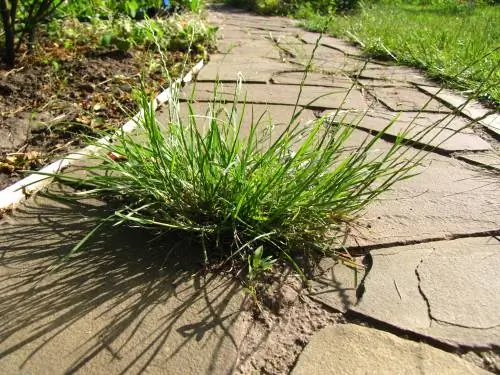- Author admin [email protected].
- Public 2023-12-16 16:46.
- Last modified 2025-01-23 11:20.
A mossy lawn is always a headache. Troubled hobby gardeners rightly ask themselves what to do? Moss killers promise a quick solution, but only solve the problem temporarily. We'll explain here how you can permanently remove moss from your lawn.

How can I permanently clear a mossy lawn?
To permanently rid a mossy lawn, you must first analyze and eliminate the causes such as shade, compacted soil, acidic pH and nutrient deficiency. Scarify the lawn, increase the pH value with lime, fertilize regularly and, if necessary, use shade-tolerant ground cover.
Causal analysis brings light into the darkness
Mosses are among the most underestimated plants. Over the course of their 400 million years of evolution, rootless land plants have developed ingenious survival strategies, including sophisticated choice of location. If moss spreads in your garden, it will find ideal living conditions to displace the actually stronger lawn grasses. We have put together the most common causes of a mossy lawn for you here:
- Shady location with too few hours of sunshine for lawn grasses
- Compacted, moist soil
- Acid pH below 6.0
- Nutrient Deficiency
A soil analysis by a special laboratory provides in-depth information about the condition of the soil, which cannot be seen with the naked eye. You can determine the pH value yourself using a test set (€14.00 on Amazon), which is available at hardware stores and garden centers for around €10. Experience has shown that a combination of all of the causes mentioned is responsible for the mossy lawn.
All-round blow removes moss and revitalizes the lawn - this is how it works
The problem of a shady, cool location can often only be solved by replacing the mossy lawn with sturdy, shade-tolerant ground cover as a lawn replacement, such as ivy or star moss. You can eliminate all other causes by giving your lawn a revitalization treatment. How to do it right:
- Mow the mossy lawn to a depth of 3 cm in spring or autumn
- Use the scarifier to comb out all the moss lengthwise and crosswise and sweep it away
- Raise a pH value that is too low with lawn lime or dolomite lime to an ideal 6.0 to 7.0
- Sand and fertilize the scarified green area
Fertilize your lawn now in spring and summer with an organic-mineral long-term fertilizer. In September/October, strengthen winter hardiness with potassium fertilizer, such as Patentkali or Thomaskali. This care program results in strengthened lawn grasses that can no longer be displaced by moss.
Iron fertilizer has a counterproductive effect
Tackling moss with iron fertilizer is like sweeping sand in the desert. Ostensibly, the existing moss dies due to the toxic iron II sulfate. In reality, the special fertilizer further lowers the pH value in the soil, ultimately paving the way for the next generation of moss.
Tip
After scarifying, a whole mountain of combed out moss piles up. Please do not throw the pile onto the compost in one go, as this can lead to rot. It is better if you compost the moss residue in layers, alternating with other organic waste materials, rock and algae lime and garden soil.


